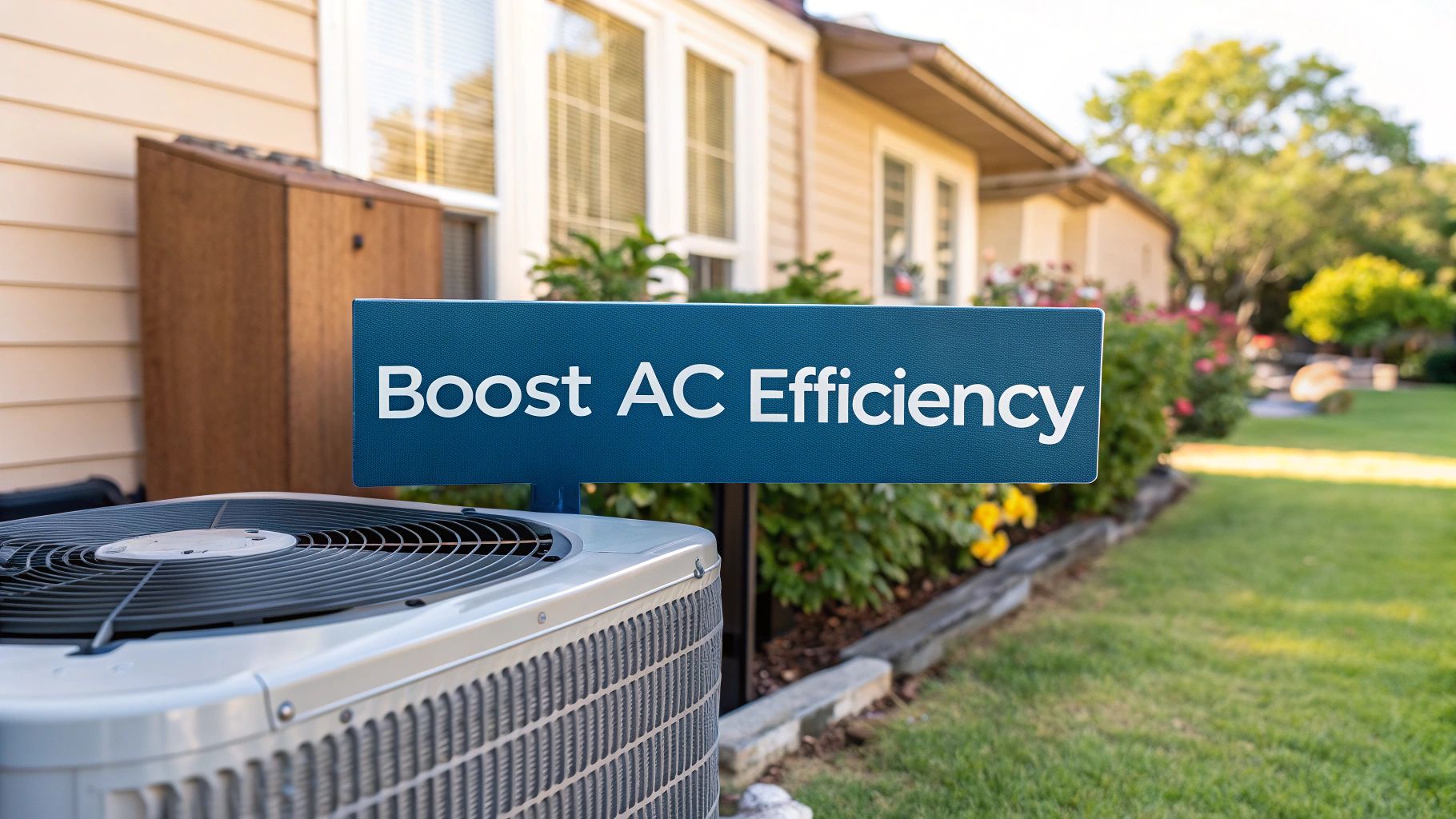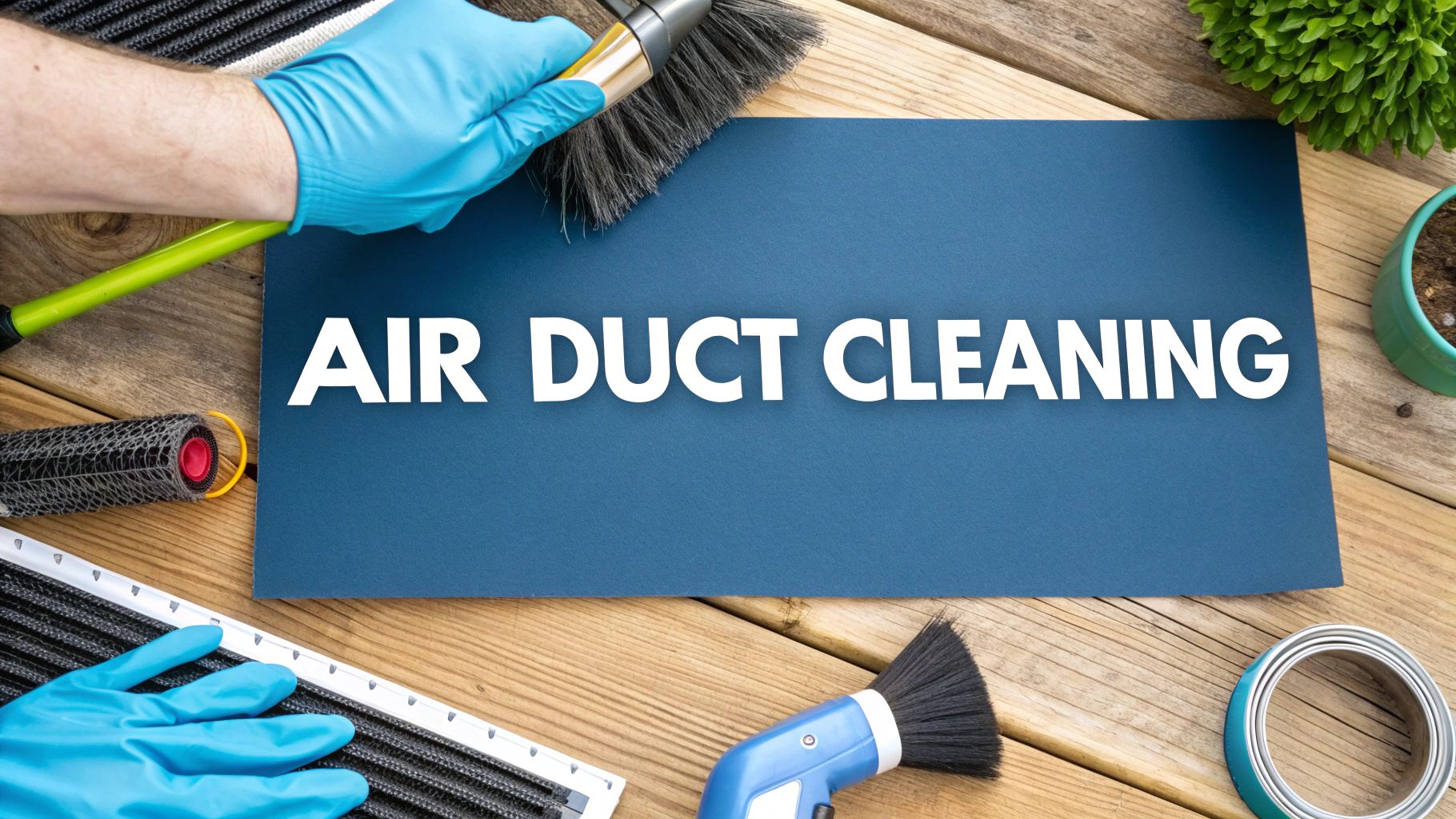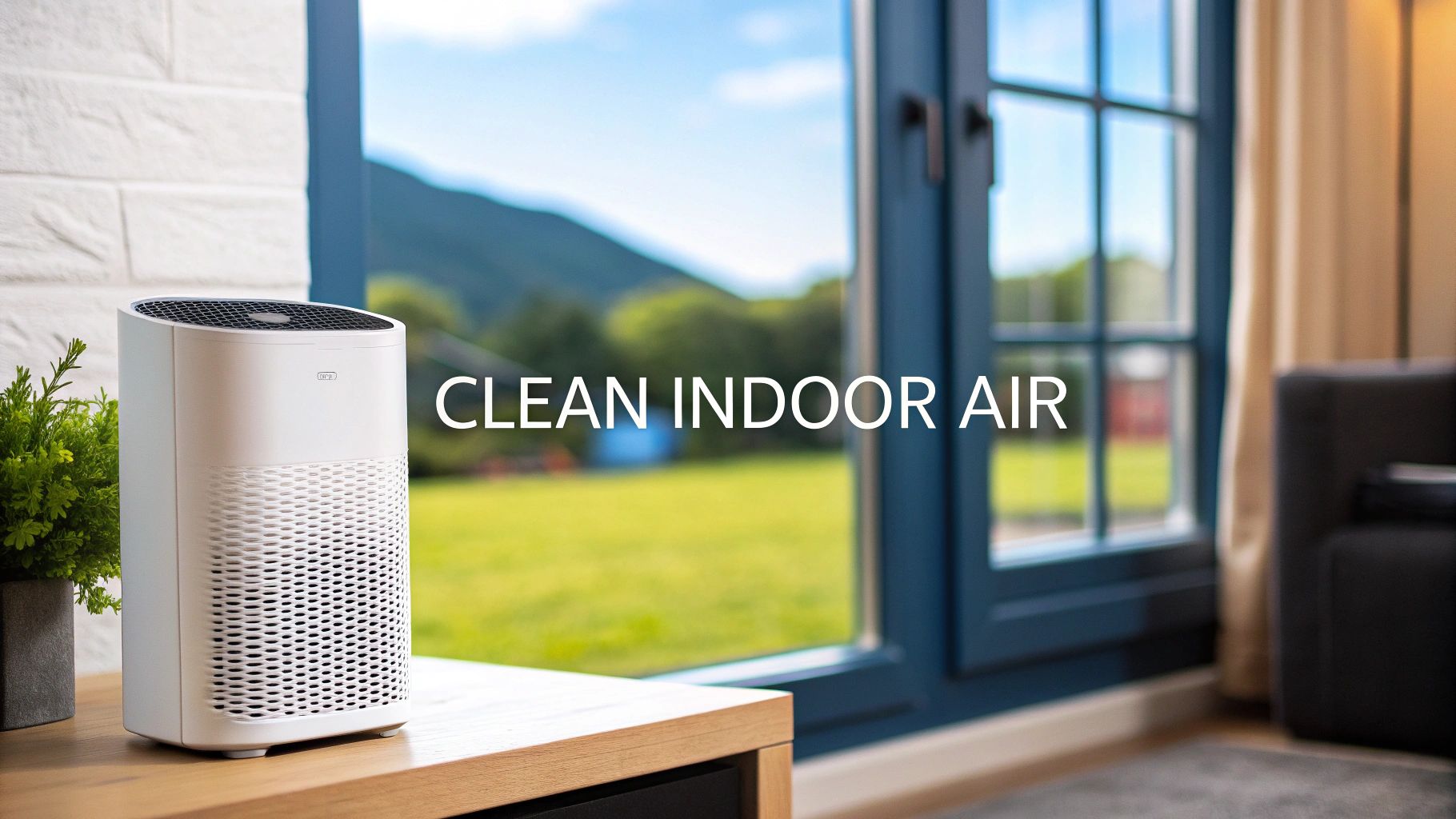Wondering how to get your air conditioner to work better without a massive bill? It really comes down to three things: a little bit of simple maintenance, using your thermostat smartly, and finding ways to reduce your home's heat load. We're not talking about expensive overhauls here, just some straightforward steps you can take today that make a real difference.
Your Quick Guide to Better AC Efficiency
Boosting your air conditioner's performance shouldn't be a huge, complicated project. More often than not, it's about tackling the little things that secretly waste energy and inflate your utility bills. It's easy to assume your AC is on its last legs when the house feels warm, but the real culprit is often something you can fix yourself in just a few minutes.
This guide is all about those practical, do-it-now solutions. We'll walk through how small tweaks to your daily routine and some basic upkeep can lead to a much more comfortable home and some very welcome savings.
Before we get into the nitty-gritty, let's look at the most common problems that hurt your AC's efficiency. Knowing what to watch for is half the battle.
A well-maintained HVAC system simply uses less energy. When filters get clogged or parts are worn out, the whole system has to work much harder to cool your home, which means higher energy bills for you.
Here’s a quick rundown of the most frequent issues we see, what they do to your AC, and how you can fix them fast.
Common AC Efficiency Problems and Quick Fixes
This table breaks down the typical culprits that tank your AC's performance and the simple solutions you can apply right away.
| Efficiency Killer | Impact on Your AC | Quick Fix Solution |
|---|---|---|
| Clogged Air Filter | Restricts airflow, forcing the system to run longer and harder. | Replace your filter every 1-3 months. |
| Blocked Vents/Registers | Prevents cool air from circulating, creating hot spots. | Keep vents clear of furniture, rugs, and curtains. |
| Leaky Windows & Doors | Allows cool air to escape and hot air to enter. | Use weatherstripping or caulk to seal any gaps. |
| Incorrect Thermostat Setting | Forces the AC to work constantly, wasting energy. | Set it to 78°F when you're home and higher when away. |
Tackling these common problems is a great first step toward a cooler, more efficient home. Now, let's dive into some more detailed strategies.
Using Your Thermostat for Smarter Cooling
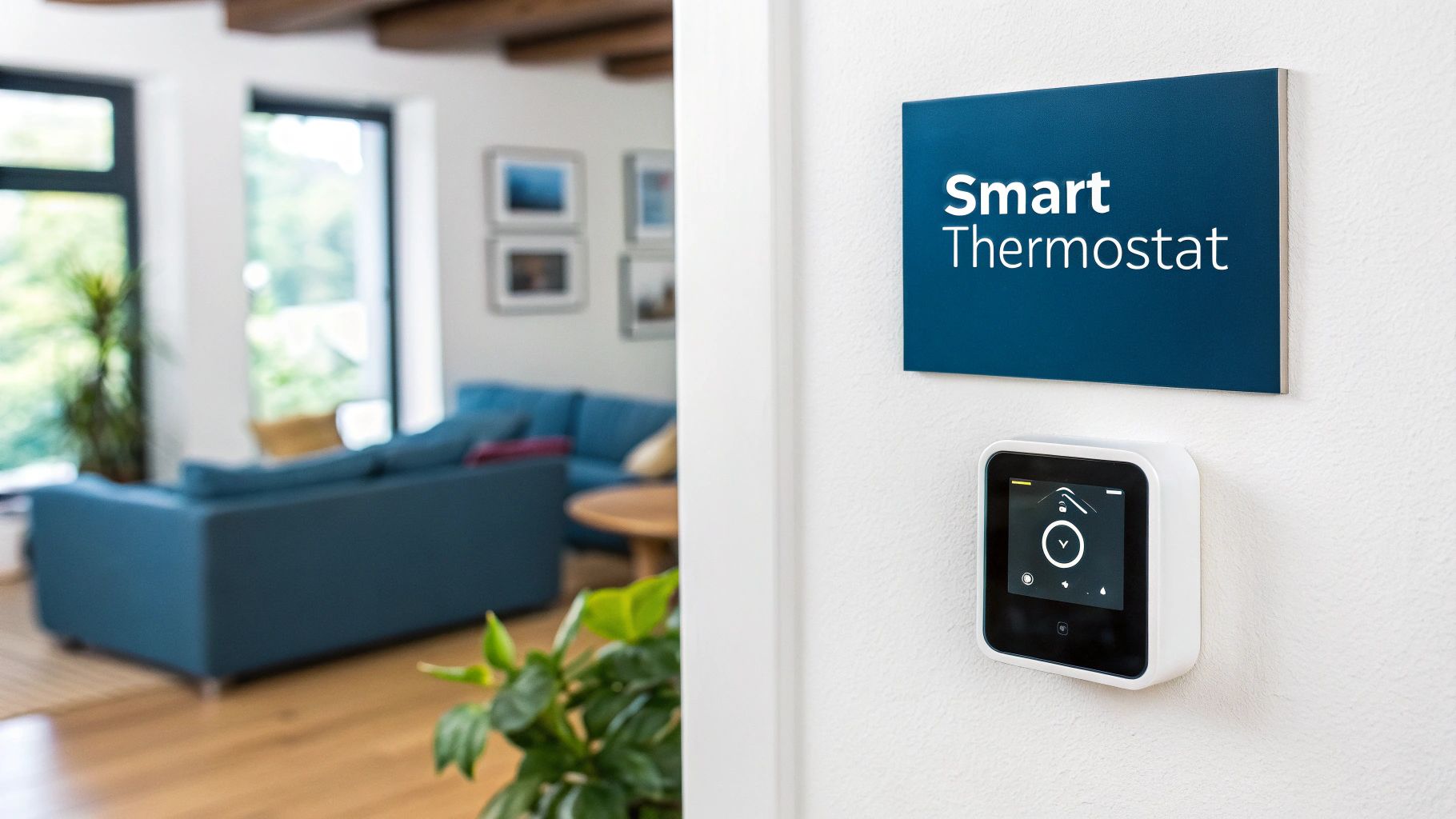
Think of your thermostat as the brain of your cooling system. A lot of folks just crank it down when they're hot and turn it up when they leave, but that constant fiddling is a real energy-waster. It forces your AC to play catch-up all day long, which is incredibly inefficient.
The real secret to saving money and staying comfortable is to adopt a "set it and forget it" strategy. Let the thermostat do the heavy lifting for you—it’s far better at managing energy than we are.
Create a Cooling Schedule
If you have a programmable or smart thermostat, you've got a powerful tool at your fingertips. The best way to use it is to create a cooling schedule that matches your family's daily rhythm. Why cool an empty house?
You can program it to let the temperature rise by 7-10 degrees while everyone is out for work or school. This one change can cut your cooling costs by as much as 10% a year.
Here are a few ideas to get you started:
- During the work week: Set the AC to ease up after you leave and kick back on about 30 minutes before you get home.
- At night: You can often get away with a slightly warmer temperature while you sleep, since your body's core temperature naturally drops.
- On weekends: Program a comfortable, steady temperature for the hours you're usually home and active.
Getting the exact numbers right can take a little trial and error. To get a head start, you can check out some general recommended thermostat settings for summer and adjust from there.
A consistent schedule means your AC unit isn't constantly starting and stopping, which is a major energy drain. It runs more smoothly and for less time overall, and that shows up directly on your utility bill.
Today’s smart thermostats are even more clever. Some models learn your habits over time, while others use geofencing to know when your phone (and you) have left the house, automatically switching to an energy-saving mode.
For the tech-savvy homeowner, you can even set up remote access for your smart thermostat through Home Assistant. This gives you complete control from your phone, so your system is only ever working when it truly needs to be.
Simple DIY Maintenance for Peak Performance
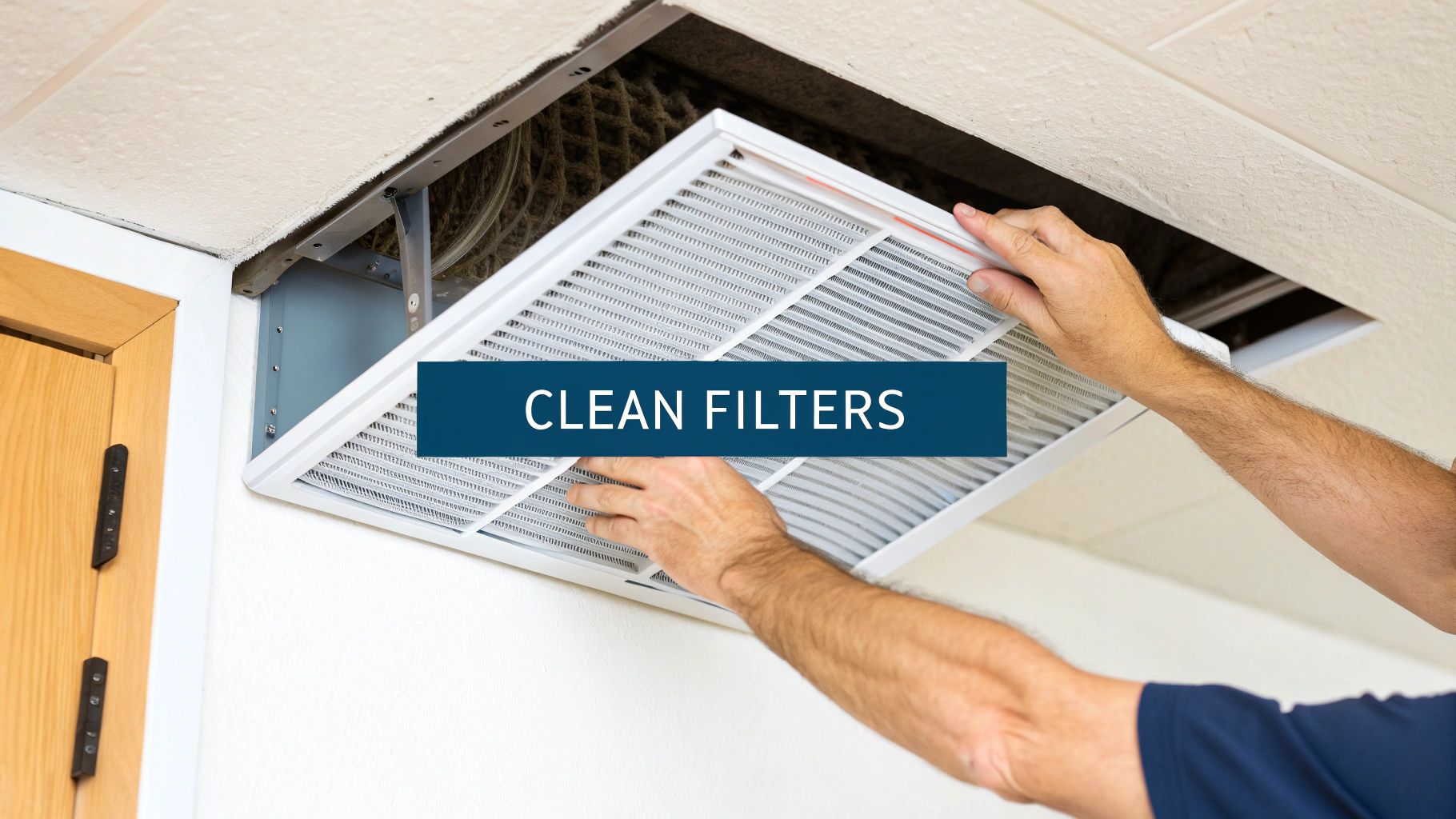
You don’t need to be an HVAC technician to make a real difference in your AC's efficiency. In fact, some of the most impactful jobs are simple things any homeowner can do in just a few minutes a month. These little habits go a long way in preventing strain on your system, helping it run better and live longer.
If you do only one thing, make it this: check your air filter. A clogged filter chokes your system, forcing it to work way harder to pull in air and cool your home. It’s like trying to run a marathon while breathing through a straw. That extra effort wastes energy and can lead to costly repairs down the road.
For the common 1-inch filters, a good habit is to swap them out every 1-3 months. Got pets or live in a particularly dusty spot? You’ll want to check it monthly. An easy test is to just hold the filter up to a light. If you can't see the light coming through, it’s definitely time for a new one.
Give Your Outdoor Unit Some Breathing Room
Your indoor unit is only half the story. The outdoor condenser has a critical job: releasing all the heat it has pulled from your house. To do that job well, it needs clear, unobstructed space.
Over the seasons, it’s easy for the outdoor unit to get bogged down with all sorts of things:
- Grass clippings from mowing the lawn
- Falling leaves and twigs
- Everyday dirt and dust kicked up by the wind
Go take a look. You want to see at least two feet of clear space all the way around the unit. Trim back any shrubs or weeds that are getting too close. You can also give the unit a gentle rinse with a garden hose (never a pressure washer!) to wash away any gunk caked on the fins.
A quick five-minute cleanup of your outdoor unit can boost your AC's efficiency by up to 10%. That's a huge return for such a small task, translating directly to lower bills and a cooler home.
Keep an Eye on the Condensate Line
Your AC doesn't just cool the air; it also pulls out a lot of humidity. That moisture has to go somewhere, and it exits through a small PVC pipe called the condensate line. If that line gets clogged with gunk, the water can back up, potentially causing water damage inside or forcing your system to shut off.
About once a month, find where this little pipe exits your house (it's usually near the outdoor unit). When the AC is running, you should see it dripping slowly and steadily. No drips? You might have a clog. Keeping the coils clean is just as crucial, since dirty coils can’t transfer heat efficiently. You can find detailed steps on how to clean air conditioning coils to make sure every part of your system is working its best.
Lighten Your AC's Workload by Reducing Your Home's Heat
Even the most powerful air conditioner is going to struggle if it's constantly battling a hot, leaky house. To really boost your AC's efficiency, you have to look beyond the unit itself and start thinking about your home's overall heat load—that's the total amount of heat your system has to pump out.
It’s amazing how a few simple changes around the house can lead to some serious savings. The goal is to make it easier for your AC to do its job, not harder.
Get the Air Moving and Block the Sun
Let's start with the easy stuff. Take a quick walk through your home. Is a sofa pushed right up against an air vent? Is a thick rug or a pile of toys blocking a floor register? Freeing up your vents is a no-cost fix that ensures the cool air you're paying for can actually get into the room.
Ceiling fans are your best friend in the summer. Just make sure they're spinning the right way—counter-clockwise. This pushes cool air down, creating a nice breeze that can make you feel several degrees cooler. You can then nudge the thermostat up a bit and not even notice the difference.
Of course, the biggest source of heat in most homes is the sun pouring through the windows. On those scorching hot days, simply closing the blinds or curtains makes a huge difference, especially on any windows facing south or west.
If you want a more permanent fix, it's worth looking into how to enhance comfort with cellular shades room darkening options. They act as an extra layer of insulation for your windows and are fantastic at blocking solar heat before it ever gets inside.
It's the Little Things That Add Up
Think about all the things in your house that generate heat. Your dishwasher, clothes dryer, and especially your oven can really warm up a kitchen. Try to run these appliances during the cooler parts of the day, like in the evening, so your AC isn't fighting the sun and your chores at the same time.
It’s the same story with humidity. Always flip on the exhaust fan when you’re cooking or showering. Those fans are designed to pull heat and moisture straight outside before they can spread through your house. It’s a small habit, but it stops your AC from having to work overtime just to dehumidify the air.
Finding all these little energy vampires can feel like a treasure hunt. Using a detailed home energy audit checklist is a great way to systematically spot and fix these hidden issues.
When to Repair or Replace Your AC Unit
Even the most well-maintained air conditioner has a limited lifespan. Eventually, you'll face the big question: do you pay for another repair, or is it finally time to invest in a new system? It’s a tough call, but making the right choice can save you a ton of money and headaches down the road.
There are a few tell-tale signs that your AC is on its last legs. If your unit is pushing past the 10-15 year mark, it's definitely living on borrowed time. Constant breakdowns, expensive repair bills, and a system that just can't seem to keep up on the hottest days are all signs that a replacement is on the horizon. Don't ignore loud grinding or rattling sounds, either—that's usually a warning that major internal parts are failing.
Understanding Efficiency Ratings
When you start looking at new units, you'll run into the term SEER, which stands for Seasonal Energy Efficiency Ratio. It’s simple: the higher the SEER number, the more efficient the unit is. An older AC might have a SEER rating of 10 or even lower. Today's standard models often start at 14, with high-efficiency units going much higher.
Just how much of a difference does it make? Upgrading from an old 10-SEER unit to a modern 16-SEER model can slash your cooling costs by over 30%.
This isn't just about saving money on your own bill. With global demand for air conditioning expected to nearly triple by 2050, choosing efficient models is becoming crucial for managing our collective energy use. You can read more about the future of the global air conditioning market on consultancy-me.com.
A good rule of thumb I always share with homeowners is the 50% rule. If a repair is going to cost half as much as a brand-new system, it’s almost always a better financial move to replace it.
Before you jump to conclusions about a major failure, this quick decision tree can help you check for common, easy-to-fix issues.

As you can see, sometimes the fix for a warm room is as simple as unblocking a vent or closing the blinds, not a catastrophic system meltdown. It always pays to check the basics first.
Answering Your Top AC Efficiency Questions
Even after you've done the basics, a few questions always seem to surface. Let's tackle some of the most common ones I hear from homeowners, separating fact from fiction so you can get the best performance from your air conditioner.
How Often Should I Really Change My AC Filter?
The standard advice is every 1-3 months for those typical 1-inch filters, and that’s a solid starting point. But your home isn't "standard," is it?
Think of it this way: if you have a golden retriever who sheds constantly, live near a dusty road, or someone in your house has allergies, you’ll want to check that filter monthly. A clogged filter is like forcing your system to breathe through a straw—it works way harder than it needs to.
What’s the Magic Number for an Energy-Efficient Thermostat?
The U.S. Department of Energy recommends setting your thermostat to 78°F (26°C) when you're home. For a lot of people, that sounds a bit warm, but it's a fantastic middle ground between staying cool and keeping your energy bills from skyrocketing.
The real game-changer? For every single degree you raise the temperature, you can slash up to 3% off your cooling costs. A programmable or smart thermostat makes this effortless by automatically adjusting the temp when you're out.
Is It a Good Idea to Close Vents in Rooms I’m Not Using?
This is probably the biggest and most persistent myth out there. The short answer is no—it actually does more harm than good.
Your HVAC system was engineered to cool a specific amount of space with a balanced amount of pressure. When you close vents, you disrupt that balance. It's like pinching a garden hose; the pressure builds up in the ducts, which can cause leaks and force your blower motor to work overtime.
For your system to run efficiently and last longer, just keep all the vents open and make sure nothing—like furniture or curtains—is blocking them.
If you've tried these tips and are still running into trouble, it might be a sign that you need a professional to take a look. The team at Florida Cooling Group is always ready to help with expert maintenance and service. You can contact us today to get your system checked out and keep your home comfortable.
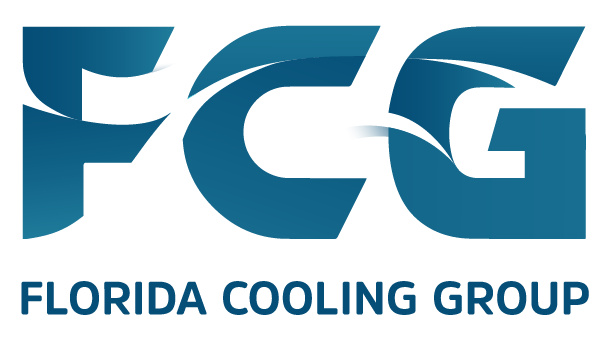
 (561) 400-2205
(561) 400-2205